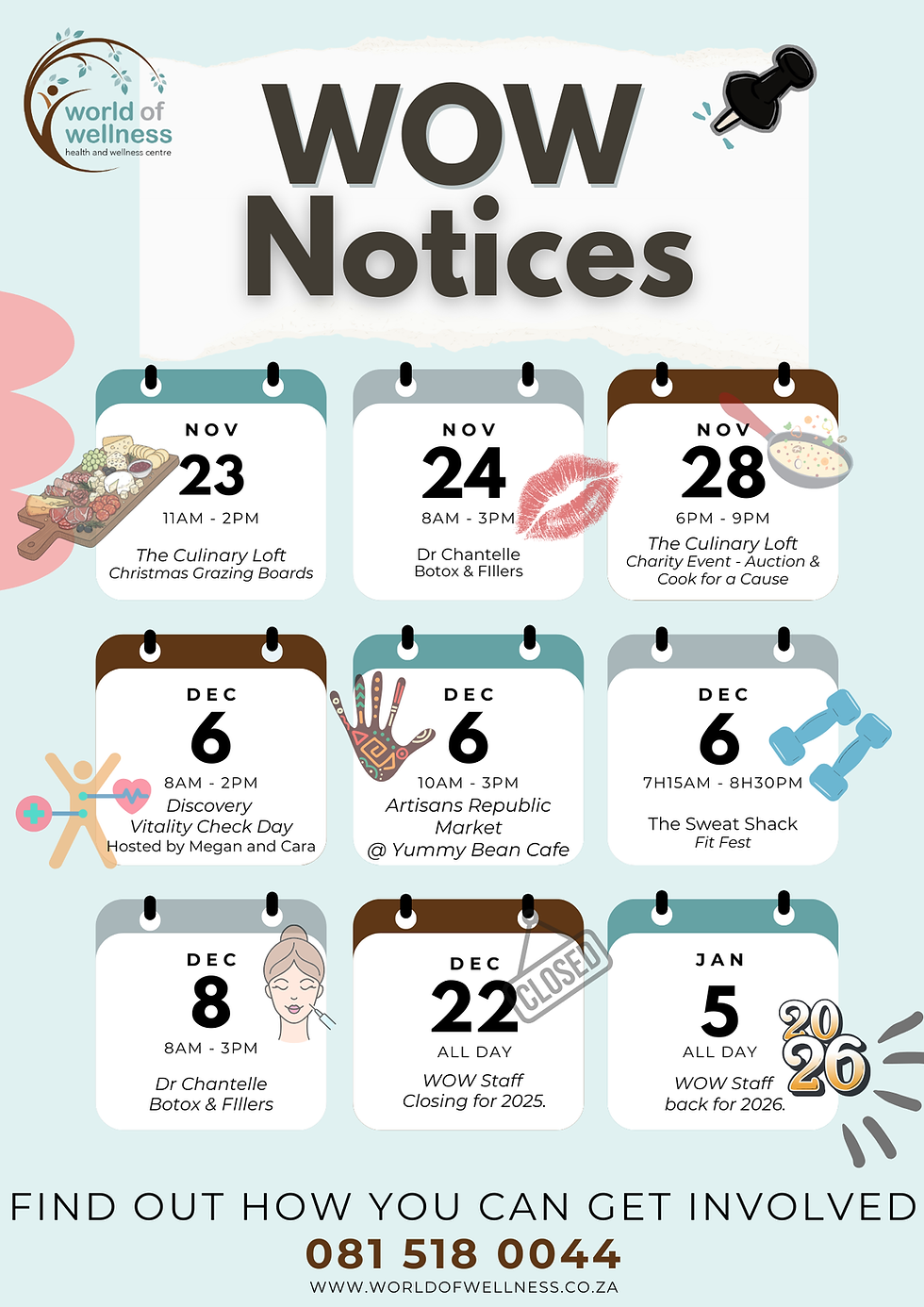Scoliosis Awareness Month
- World of Wellness
- Jun 27, 2019
- 2 min read
Scoliosis, the medical term for curvature of the spine, affects millions of people around the world. It is estimated that 2 to 3 percent of the population suffer from Scoliosis.
The most common form is Idiopathic Scoliosis (in which the cause is unknown), and it most commonly occurs between the ages of 10 and 18. Girls are much more likely than boys to require treatment.
The severity of Scoliosis and the need for treatment is determined by the angle at which the spine is out of normal alignment. Milder cases generally require no treatment.
If the spinal curve is less than 25 degrees, ongoing monitoring is recommended to see if the angle is increasing.
If the curve does increase over time, or if it is between 25 and 40 degrees, treatment with a brace can be used.
When the angle exceeds 45 to 50 degrees, surgical correction may be necessary.
Great progress has been made in recent years in the treatment for the middle range of Scoliosis to stop the progression and avoid the need for surgery.
Here are simple steps to take if you suffer from Scoliosis:
Exercise
Activities that strengthen and stretch your back may help reduce your pain. Exercise can also help you maintain a healthy weight, which can reduce the strain on your back.
It doesn't matter what type of exercise you choose – the important thing is to keep your back moving. Choose something you enjoy and are likely to be able to stick with.
Yoga
Researchers have found that spine curvature improves by around 32% in patients who practice yoga poses. Among patients who did yoga for at least 3 days a week, spine curvature improved by 40.9%. Of these patients, adolescents saw a 49.6% improvement in curvature, while adults saw a 38.4% improvement.
Pilates
The benefits of Pilates for people with Scoliosis are many, but, perhaps the most important benefit that Pilates has is to teach you how to manage your condition. Pilates exercises target your back muscles by improving their strength which helps to reduce pain and improve your overall stamina. This can be done in conjunction with a brace, if necessary, which helps to eliminate motion in order to help you to be able to participate in Pilates conditioning.
Back braces
Back braces aren't often used in adults with scoliosis, but they can provide pain relief by supporting your spine.
A brace may be considered as an alternative to surgery if you're not well enough to undergo an operation.
Don't Text Too Frequently
The forward, bent-head position of texting is terrible for people suffering with Scoliosis.
It's not good for anyone, actually.
It puts pressure on the spinal cord and compresses blood vessels to the spinal cord. Texting can damage the spinal cord and degenerate vertebra over time.
Texting often leads to chronic neck pain and may trigger Scoliosis progression. Using talk to text functions, holding the phone at eye level is the safest ways to text.
If you suspect you may have scoliosis, it's a good idea to speak to a healthcare professional – such as a our Registered Chiropractor – to diagnose your condition and suggest corrective actions.
Dr Naomi Booysen
0815180044
0735093124
info@worldofwellness.co.za










Comments